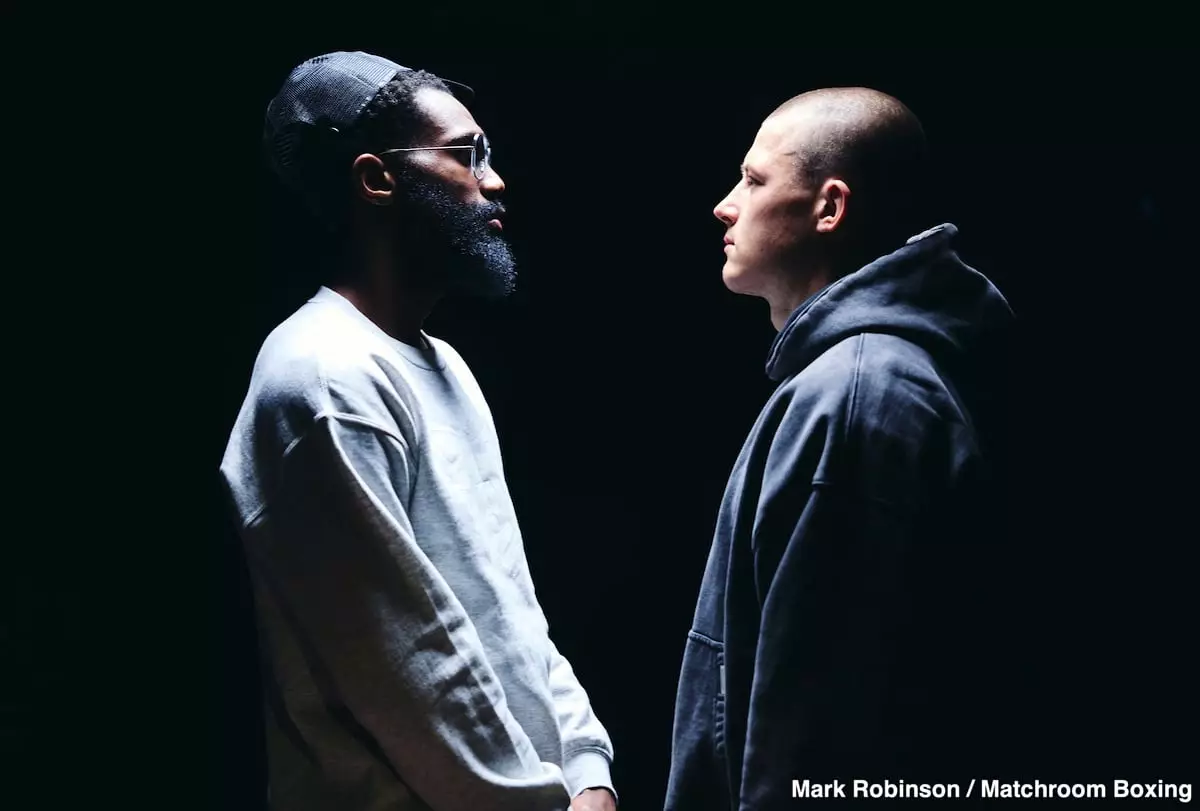As Jaron “Boots” Ennis prepares for his highly anticipated fight against Eimantas Stanionis, the visual representation of his weight cut raises alarm bells. Draining down to the welterweight limit of 147 pounds, Ennis appears alarmingly gaunt, far more like a casualty of deprivation than a professional athlete gearing up for a championship bout. His sunken features and malnourished physique call to mind the desperate conditions of a Civil War-era prisoner, highlighting the dangerous realities that elite athletes often face in their pursuit of glory.
This vivid imagery serves as more than mere drama—it sheds light on a critical issue within boxing: the perilous extremes fighters undergo to make weight. Ennis’s reflections on his struggles at this division parallel those of Devin Haney during his lightweight days when the latter’s health came into question amidst dangerous weight cuts. The question looms large: is maintaining a size advantage worth sacrificing one’s health? There comes a point when ambition morphs into recklessness, and Ennis stands at that critical juncture.
The Unsettling Comparison to Haney
The echoes of past fighters resonate through Ennis’s current situation. Just as Haney faced heavy scrutiny for his choices at lightweight, Ennis is walking a similar tightrope, troubling boxing fans and analysts alike with how visibly undernourished he looks leading up to the fight against Stanionis. Comparisons like these emphasize a necessary discourse surrounding the culture in boxing that often promotes unhealthy practices in the name of competition.
Maintaining weight within stringent limits for long periods leads not just to physical depletion but can also carry emotional and psychological impacts. In this pursuit for dominance, Ennis must confront the unflattering reality: is his dedication to remaining in the welterweight category a calculated strategy or a mask for deeper insecurities? The ambiguity surrounding his choice hints at a growing fear of stepping outside the familiar confines of his current division, even if it ultimately hampers his well-being.
An Analysis of the Fight Dynamics
As an IBF welterweight champion, Ennis has a stellar record—33 wins, 29 by knockout. Yet, the performance against Karen Chukhadzhian serves as a sobering reminder of the limitations imposed by weight struggles. Attendees and fans are gearing up for what aspires to be a thrilling fight night, yet the anticipation also carries an undertone of anxiety given Ennis’s recent history. Can a fighter performing with such visible distress maintain the composure and skill necessary against an opponent like Stanionis, who is enjoying a healthier stature and physically appears to be in peak condition?
Chris Algieri succinctly captures this sentiment while breaking down the attributes of Stanionis, who bears the title of WBA Welterweight Champion. He remarks on Stanionis’s jabbing technique—targeting the chest with strength that echoes through his entire frame—something that could undoubtedly benefit from the kind of physical readiness Ennis currently lacks. This insight raises further questions about the sustainability of Ennis’s strategy; will undertaking such a draining weight cut rebuff his chance for a decisive victory?
Fighting Through the Weight Crisis
Despite the speculations and doubts creeping into the minds of boxing aficionados, Ennis’s decision to remain at welterweight cannot be dismissed without understanding his motivations. There is a certain allure to staying within a division where he is deemed a dominant force, such as the coveted prospect of unifying the division before advancing. But, if the challenge of opponents such as Vergil Ortiz Jr. looms large, is his ambition blinding him to the harsh realities of maintaining championship status amid an unhealthy weight cut?
The missed opportunity to face Ortiz, a bout potentially laden with financial incentives and career advancement, could haunt Ennis if he falters against Stanionis. This is where the crux of the matter lies: boxing is an intensely psychological sport, and the consequences of fear can manifest in performance. If Ennis struggles in the ring partially due to the effects of weight deprivation, what then becomes of his ambitions?
When fighters encounter physical strain at championship levels, the battleground extends beyond the ring. For Ennis, every jab thrown and every round fought is shackled by the decisions he makes outside of the ring. As fans, we are left to grapple with the reality that athletic aspirations often come fraught with moral complexities, physical demands, and a commodified system wherein fighters must balance risk with reward on the scales of ambition. The ring may be his stage, but the life choices between fights define the very essence of a champion.

